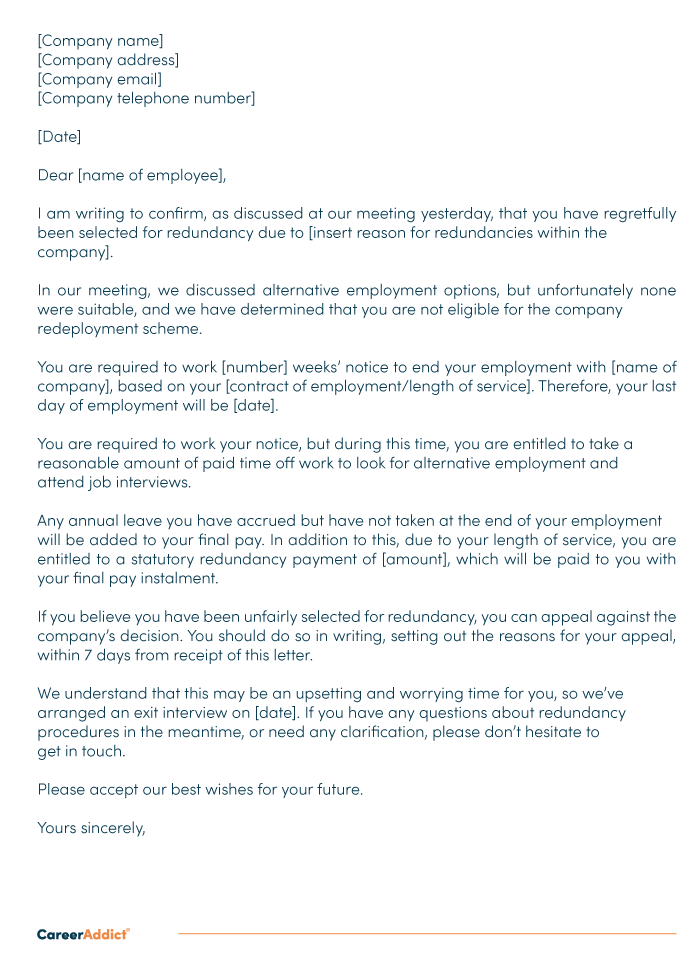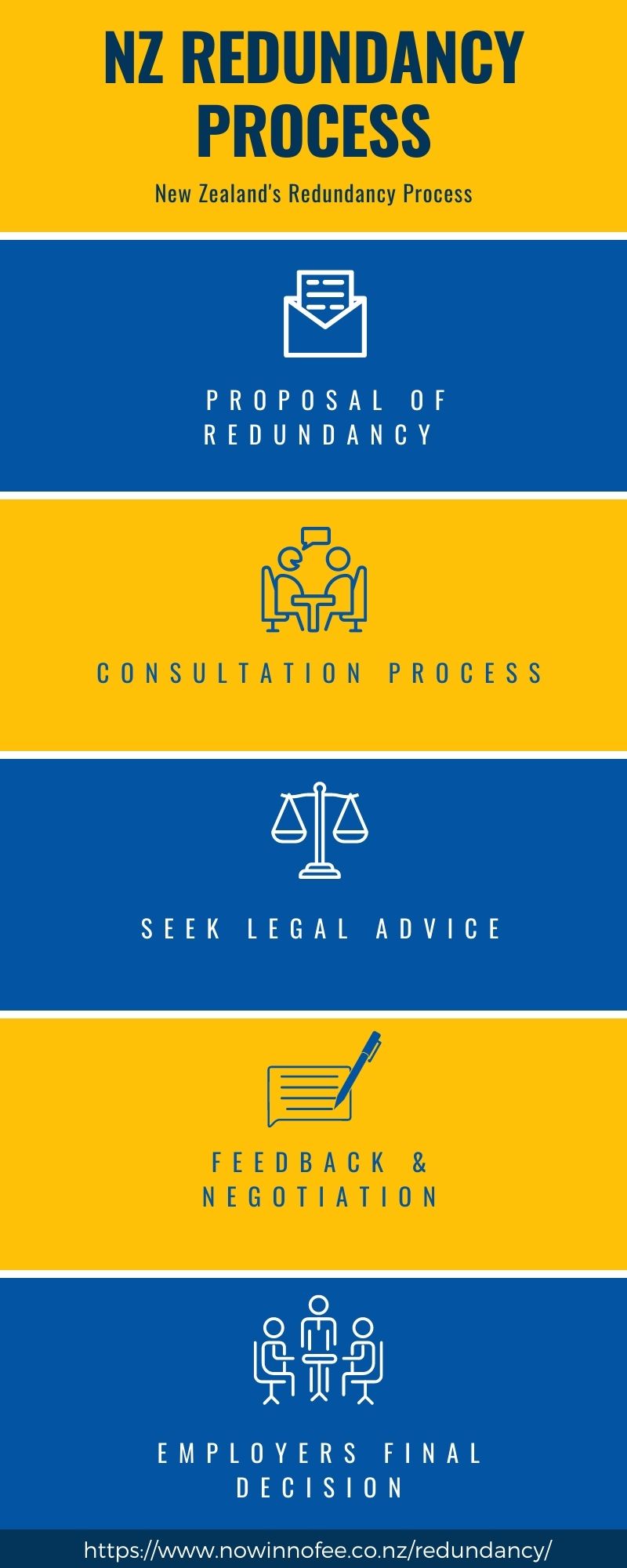Who Pays Redundancy Money? Understanding Company Obligations in the UK
Who Pays Redundancy Money? Understanding Company Obligations in the UK
Blog Article
Examining the Interaction Between Company Redundancy and Business Adaptability for Future Development
In the vibrant landscape of today's service globe, the complex partnership between business redundancy and business flexibility emerges as a crucial element for continual development and success. Firms commonly deal with the difficulty of striking a fragile equilibrium in between keeping a level of redundancy to mitigate threats and fostering flexibility to react promptly to the ever-evolving market needs.
Importance of Company Redundancy
Company redundancy is an essential aspect that boosts organizational durability and reduces operational risks. By incorporating redundancy steps within the organizational framework, companies can better endure unanticipated disturbances and changes in the service atmosphere. Redundancy serves as a tactical barrier, enabling firms to adapt and react effectively to unexpected obstacles without endangering crucial procedures.
One secret element of the relevance of business redundancy is its function in guaranteeing connection throughout times of dilemma. When faced with abrupt modifications or emergency situations, redundant systems, sources, or workers can step in to maintain crucial features and avoid prevalent disruptions. This connection not only safeguards the firm's reputation and client count on but also lessens financial losses and functional downtime.

Strategies for Organizational Adaptability

Creating versatile business structures that allow for fast changes to market dynamics and consumer demands is crucial for staying affordable in a swiftly progressing environment. By proactively identifying possible disruptions and possibilities, companies can proactively adjust and prosper in an ever-changing service landscape.
Balancing Redundancy and Adaptability
Attaining a harmonious stability between functional redundancy and organizational adaptability is extremely important in navigating the complexities of a vibrant business setting. Redundancy within a business gives a security web, ensuring continuity and security in operations. Nonetheless, an excess of redundancy can bring about ineffectiveness and prevent versatility to transforming market problems. On the other hand, business adaptability enables companies to respond without delay to external interruptions and seize new opportunities. Striking the best equilibrium between redundancy and versatility is a fragile process that needs a deep understanding of the company's goals, market characteristics, and threat tolerance.
To accomplish this balance, companies require to carry out routine assessments of their procedures to determine areas where redundancy is needed for risk reduction and where flexibility can drive development and growth. Executing adaptable frameworks, fostering a culture of constant discovering and enhancement, and motivating open communication throughout all degrees of the company are crucial techniques to balance redundancy and adaptability effectively. By straightening these 2 important aspects, business can position themselves for lasting growth and success in an ever-changing business landscape.
Case Researches on Adjustment Success
In taking a look at instances of successful business adaptation, it click for more becomes noticeable that the interplay in between functional redundancy and adaptability is a specifying consider forming durable companies. One engaging situation study is that of Netflix. Originally a DVD rental service, Netflix showed exceptional adaptability by transitioning right into a streaming platform when digitalization interfered with the sector. By tactically buying modern technology and websites content production, Netflix not only prospered but made it through in a rapidly progressing market. An additional standout instance is Amazon. Starting as an online book shop, Amazon constantly adapted its organization model, increasing into diverse fields such as cloud computing and fabricated intelligence. This versatility permitted Amazon to stay ahead of rivals and meet altering customer needs. Lastly, Adobe provides a significant image of successful adaptation. The firm changed from selling software program licenses to a subscription-based version, guaranteeing persisting earnings streams and enhanced customer engagement. These study emphasize the significance of operational redundancy combined with organizational flexibility in fostering lasting growth and competitiveness.
Building Resilience for Future Development
Building strength for future growth calls for a calculated alignment of functional processes with market characteristics and emerging fads. Business must adjust to changing atmospheres by fostering a society of flexibility, development, and continual renovation.
In addition, promoting solid connections with stakeholders, such as consumers, workers, distributors, and the community, is crucial for keeping and weathering uncertainties depend on and assistance during stormy times. Effective communication and transparency play an essential role in building strength, as they help align assumptions and promote partnership in navigating unpredictabilities.
Furthermore, visit here organizations require to focus on learning and advancement efforts to upskill workers and furnish them with the needed devices to adjust to changing situations. By buying their workforce, firms can boost their flexibility and agility, ultimately strengthening their durability for sustainable future growth.
Final Thought

In the dynamic landscape of today's service globe, the intricate connection in between firm redundancy and organizational flexibility emerges as a crucial aspect for continual growth and success. Business usually face the difficulty of striking a fragile equilibrium between preserving a degree of redundancy to reduce dangers and cultivating flexibility to respond swiftly to the ever-evolving market demands.To accomplish this equilibrium, firms require to conduct regular evaluations of their procedures to recognize areas where redundancy is essential for threat mitigation and where adaptability can drive development and growth.In final thought, the interaction in between firm redundancy and business flexibility is crucial for future growth. Building resilience through a mix of redundancy and flexibility will certainly make certain that firms are prepared for the obstacles of the future.
Report this page